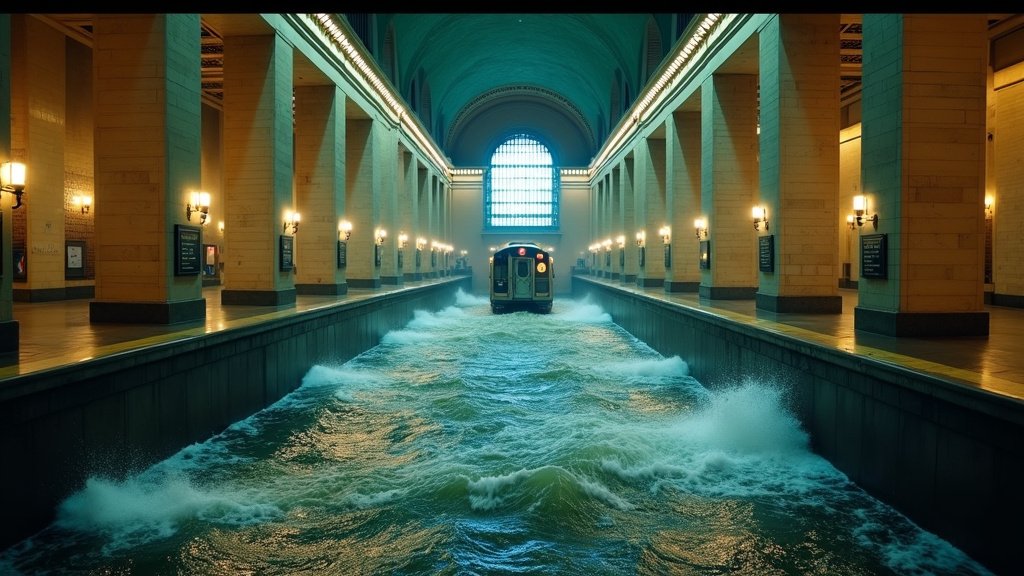A severe storm unleashed torrential rain and widespread flash flooding across the US East Coast on Thursday, transforming streets into treacherous rivers in major cities from New York to Washington D.C. The intense downpour prompted emergency declarations in New York and New Jersey, significantly disrupting public transit systems and igniting widespread alarm, as captured in viral videos that began trending online.
City Under Siege: Transit Systems Crippled
New York City experienced some of the most dramatic impacts, with its vital subway system succumbing to the deluge. Footage circulating widely depicted subway stations inundated with water, and rain cascading into iconic locations such as Grand Central Terminal. The city’s bus services also faced severe disruption, with water impacting operations. The sheer volume of rain turned urban landscapes into waterways, creating a chaotic scene for commuters and residents alike.
Particularly alarming was the news emerging from Brooklyn, where videos showed water violently bursting through the walls of the 7th Avenue station in Park Slope. Further adding to the transit woes, a train in Queens was forced to halt its journey due to flooded tracks, leaving passengers stranded amidst the escalating weather emergency.
State of Emergency Declared Amidst Torrential Deluge
In response to the severity of the storm, New York Governor Kathy Hochul declared a state of emergency for New York City and its surrounding counties. The declaration was accompanied by urgent advisement for employers to dismiss their staff early, a move aimed at reducing the number of people traveling on the already overburdened and compromised infrastructure. Residents were strongly urged to monitor weather forecasts diligently and prioritize their safety by staying indoors whenever possible.
Meteorological Factors and Public Reaction
Meteorologists attributed the storm’s unusual intensity to a powerful collision with a warm, moisture-rich air mass, a phenomenon that amplified the rainfall to extreme levels. The dramatic scenes unfolding across the city did not go unnoticed by netizens, who took to social media platforms to express their deep concerns.
A significant portion of the online discussion focused on preparedness for increasingly severe weather events, with many users drawing connections to climate change and questioning the city’s infrastructure resilience. The safety of navigating the subway system during such extreme weather became a featured topic of debate, with many asking, “Isn’t it dangerous?” The top concern among many was the potential for further catastrophic failures and the implications for public safety.
The storm’s impact serves as a stark reminder of the vulnerability of urban infrastructure to extreme weather, prompting calls for greater investment in climate adaptation and more robust emergency response strategies. As the East Coast recovers from this significant weather event, the focus remains on ensuring the safety and resilience of its essential services.





